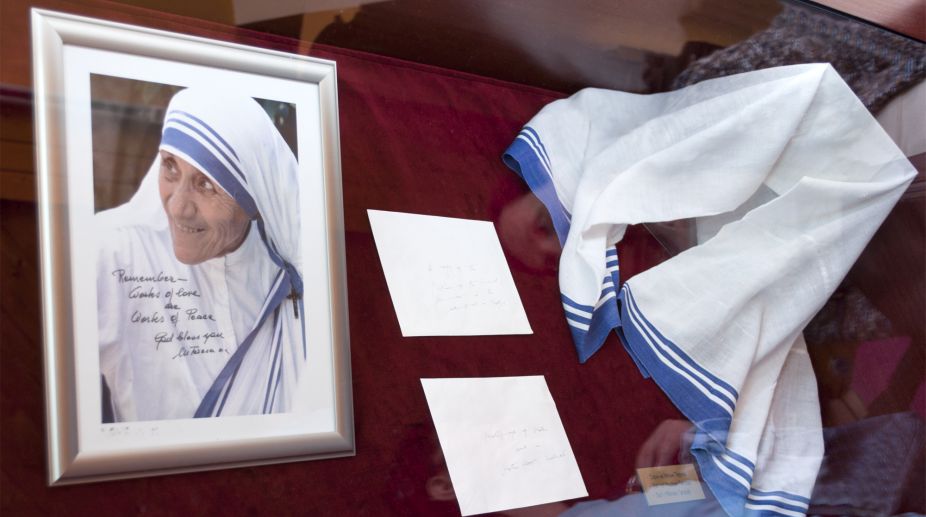City relives Mother’s memories on celluloid
Mother Teresa, who attained sainthood for her work for the downtrodden and the marginalized sections of the city
Her contribution to alleviating suffering and pain has made her name famous throughout the world.

(Photo: Getty Images)
Mother Teresa had once said, “By blood, I am Albanian. By citizenship, an Indian. By faith, I am a Catholic nun. As to my calling, I belong to the world. As to my heart, I belong entirely to the Heart of Jesus.”
She came to India in 1929 and stayed the rest of her 87-year-long life mostly in Calcutta/Kolkata where she founded the Missionaries of Charity in 1948.
She started with looking after the sick, especially those suffering from HIV/AIDS, leprosy and tuberculosis patients.
Advertisement
Her contribution to alleviating suffering and pain has made her name famous throughout the world.
Born on August 26, 1910, in Skopje town (capital of the independent country of Macedonia now but then part of the Ottoman Empire — and then under Serb, Bulgarian and then Yugoslav rule during her early life) as Anjeze (or Agnes, more commonly) Gonxhe Bojaxhiu, she was always religiously inclined.
According to a 1988 biography (“Mother Teresa” by Joan Graff Clucas), she was fascinated by stories of missionaries serving in Bengal and even before her teenage years decided on religious life.
In India, she was initially based in a convent in Darjeeling where she learnt Bengali and taught at the nearby St. Teresa’s School. As a nun, she chose to be named after Therese de Lisieux, the patron saint of missionaries.
She enjoyed teaching but was greatly concerned at the poverty and pain around, especially after the 1943 famine and the 1946 communal riots.
Replacing the nun’s habit for the sari, she began missionary work with the poor in Calcutta in 1948 after taking Indian citizenship and spending a few months in Patna for basic medical training.
Initially, she started a school but soon started taking care of the destitute, and was, in 1949, joined by a group of young women, which later became the Missionaries (Vatican approval was accorded in October 1950).
She was conferred the Padma Shri in 1962 and the Bharat Ratna in 1980 with the Ramon Magsaysay Award in 1962, and the Nobel Peace Prize in 1979 and many others.
Her health slowly started failing from 1983 when she had her first heart attack and passed away on September 5, 1997.
Advertisement